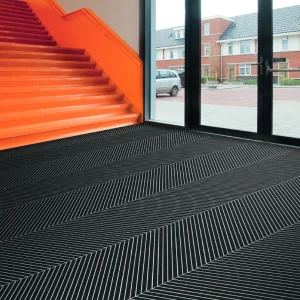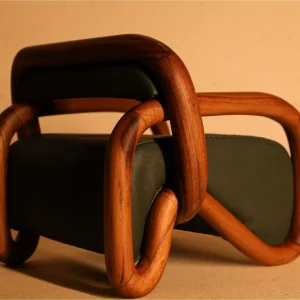‘Luukku’, which is a Finnish term for ‘hatch’, has been designed by collaboration at Aalto University which includes the Helsinki University of Technology, University of Art and Design and the Helsinki School of Economics.
Inspired by the traditional Finnish summerhouse, Luukku is designed as a net-zero energy house for extremely cold climates with little exposure to sun. Timber and wood are the dominant elements being used extensively throughout the Luukku on the structure, insulation, cladding, interior floor, wall and ceiling finishes, making the most of its moisture and heat buffering qualities. Timber is also used in wet areas such as bathrooms.
The home’s high-efficiency insulation is achieved using thick and tight insulation and quadruple-glazed frameless units fixed directly to the frame of windows. Energy-efficient equipment, grey water recycling, a solar hot water heater and building materials with a low carbon footprint are other distinguishing features of this house.
A notable element of Luukku is its 52 square meters of photovoltaic system that is designed to achieve zero-energy status in Finland. Solar collectors on the roof ensures heated in-house water supply. The house uses ventilation heat exchanger to reduce the amount of energy and bio-degradable wood fiber and low value argon filled glasses to prevent heat loss. The building is well insulated and constructed to be airtight. Moisture control is achieved using wood panels that are profiled to create a large surface area, allowing the material to act as a thermal and moisture buffer for the building.
At every stage during the design process, the building was analyzed using IDA ICE energy simulation software to achieve the best possible levels of energy conservation and lowest consumption. Further design calculations were made on the structural system, water consumption and electrical generation along the course of the project design. The Luukku House team calculated not only the carbon footprint of the building construction that came to 14,778 kg, but also the carbon storage the building represents, which was 26,245 kg.
Over 60 members from the collaborating schools were involved in the design and construction of Luukku, which was transported from Finland to Madrid, to be assembled and displayed for public view.
The Solar Decathlon competition is organized by the U.S. Department of Energy Solar Decathlon. It is a worldwide competition for universities to design and build a prototype solar powered energy house producing more energy than it consumes on an yearly basis. The winner of the competition is the team that blends affordability, consumer appeal, and design excellence with optimal energy production and maximum efficiency.
The Spanish and American governments signed an agreement in 2007 to hold a Solar Decathlon Europe in Madrid in 2010 and 2012 between US editions. Twenty one universities have been selected to take part in the European event.





